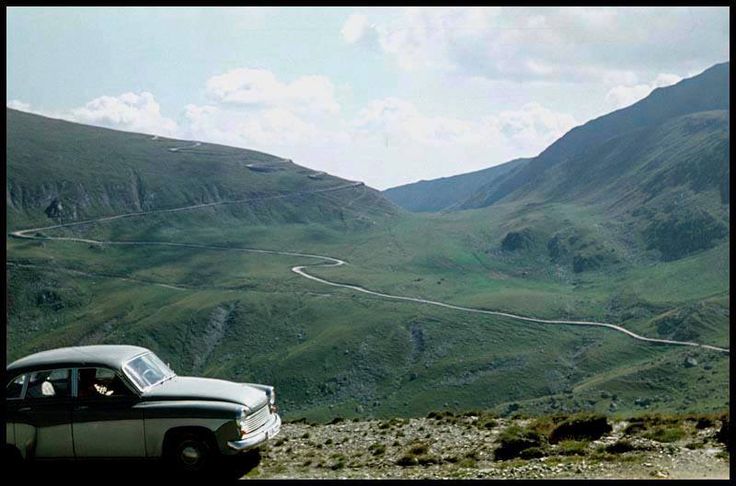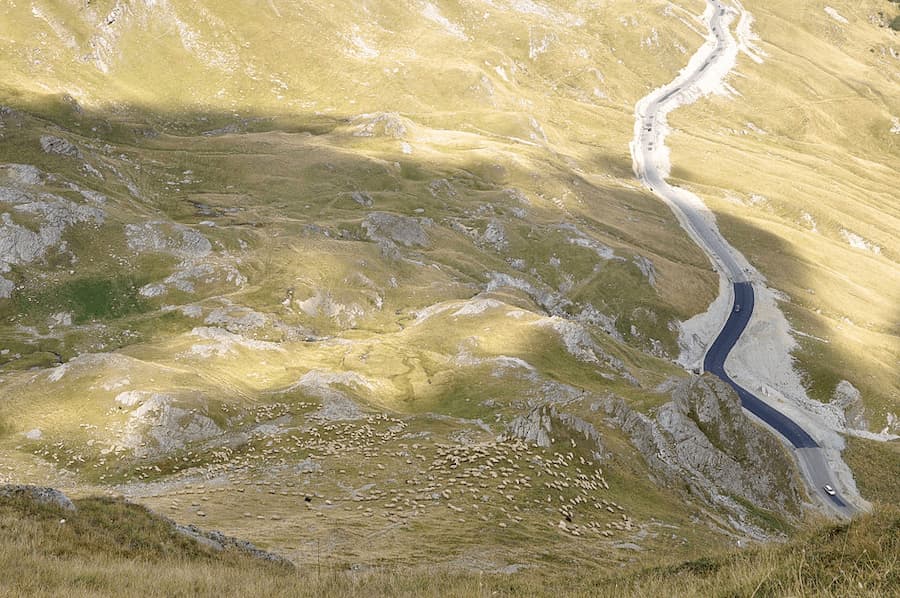The Transalpina Highway, also known as DN67C, traverses Romania’s Southern Carpathian Mountains, often referred to as the Transylvanian Alps. Standing as the highest road in Romania, it reaches an impressive altitude of 2,042 (6696 feet) meters at its peak, surpassing even the renowned Transfagarasan Highway, which reaches 2,042 meters. Spanning 148 kilometers (92 mi), this asphalt-paved route links the town of Novaci in the Gorj district to Sebes further north in the Alba district. However, due to harsh weather conditions, the road is closed during the coldest winter months.
- Location: Romania
- Length: 148 km (92 mi)
- Elevation: 2042 meters (6696 feet)
- Major junctions: From Novaci To Sebeş

Dangerous curve at Transalpina, pic: Radisa Zivkovic
History of the Transalpina
The origin of the Transalpina remains shrouded in debate, with various theories attempting to uncover its beginnings. Alongside scholarly conjecture, local legends add intrigue to the road’s history. Some suggest that Roman legions constructed the road during the Dacian Wars to access Sarmizegetusa, the principal city of the Roman Empire in Romania, which still harbors numerous ruins and a significant archaeological legacy. Others claim that in the late 18th and early 19th centuries, local families participated in the road’s construction, leveraging their physical and financial resources. Additionally, according to some sources, German troops built the cobblestone road during World War I for strategic military purposes, though its usefulness during that period remains uncertain. Ultimately, the Transalpina was rebuilt and officially inaugurated by King Carol II of Romania during World War II, opening its doors in 1938 and being recognized as a monumental achievement in technical, economic, and military terms.

Old picture of Transalpina
Transalpina Today
In 2007, a modernization plan for the road was launched to enhance access, particularly for tourism, and improve safety. Construction concluded as planned in April 2012, despite concerns voiced by some regarding potential loss of the road’s original authenticity and environmental impact. Today, the Transalpina remains a destination of high tourist interest, attracting numerous motorcyclists and travelers seeking the exhilarating driving experience through its winding curves and captivating mountain vistas. For an unforgettable journey through Romania’s breathtaking landscapes and rich history, make sure to include the Transalpina in your travel itinerary.

View of Urdele Pass

Transalpina from the top

Transalpina in summer
Transalpina in Google Maps


 (5 votes, average: 4.40 out of 5)
(5 votes, average: 4.40 out of 5)










